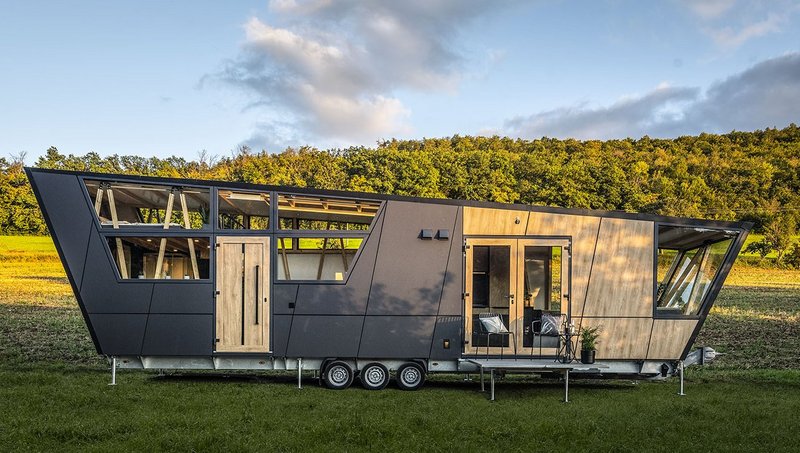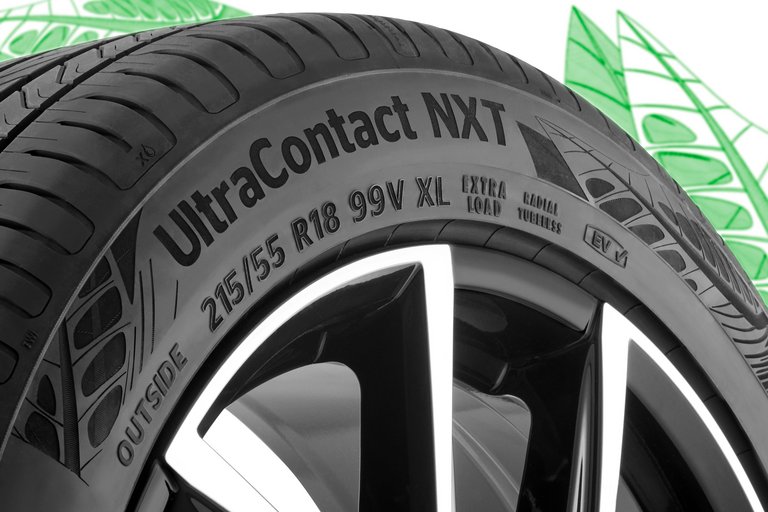Sustainable materials and technologies for future-proof, safe mobility and other industries
- World premiere: Continental presents the most sustainable series tire UltraContact NXT
- Together with its customers, Continental is paving the holistic way towards electrification
- Continental develops profitable, material-driven solutions for a more sustainable future
Frankfurt, 14 June 2023. Continental's 2022 Mobility Study shows that consumers are increasingly willing to invest in sustainable mobility. Materials play a key role in keeping us safe, healthy, mobile, contribute to comfort and can preserve valuable sources of raw materials. Continental is dedicated to developing profitable, material-driven solutions that contribute to a more sustainable future. These include, for example, solutions that manage the transition from fossil fuels to sustainable energy, battery cooling and thermal management systems that minimize the risk of fire, and a range of innovations for the development of safe and efficient electric vehicles. Finally, Continental combines a very high proportion of circular materials with the highest tire safety standards for first-class sustainable performance and increases the proportion of natural and bio-based materials for interiors and exteriors – in automotive and in living.
"Our materials and technology competence plays a crucial role on the way to a more sustainable future," says Ariane Reinhart, member of the Executive Board and Group Sustainability at Continental. Continental's experts use their extensive technology and material expertise in the areas of sensors, safety and comfort to develop innovative solutions.
How to make it sustainable: World premiere of the most sustainable series tire to date
Continental's most sustainable series tire to date – the UltraContact NXT – celebrated its world premiere at the Techshow 2023. With up to 65 percent renewable, recycled and mass balance certified materials, the tire combines a high proportion of sustainable materials with maximum safety and performance. Continental is the first manufacturer in the world to put a tire with such a high proportion of sustainable materials into series production. All 19 dimensions have the top marks in the EU tyre label ("A") in the areas of rolling resistance, wet braking and external noise. The UltraContact NXT will be available for tire retailers in Europe from July.
On the way to new propulsion systems
The market is certain: hybrid and fuel cell-powered vehicles as well as battery-powered electric vehicles are future technologies. Continental supports this market change. In addition to new material solutions, the focus will be on thermal input and output modules, DC/DC converters, battery management systems and charging controllers for electric vehicles. With reduced weight and always emission-free and local delivery systems, Continental is making its contribution to more sustainable mobility of the future.
Safety at hydrogen fuel stations
Hydrogen is considered a promising energy supplier in future mobility and is free of harmful emissions. The hydrogen fuel stations required for this type of energy generation are linked to high demands in the network and transport infrastructure. With its solutions, Continental is helping to master the challenges along the entire hydrogen value chain: from production, transport, storage and distribution to use in fuel cells. Since hydrogen has a very wide flammability range, safe and efficient hydrogen delivery is one of the crucial processes at hydrogen fuel stations. For this reason, there are also stricter performance requirements for hydrogen hose systems, for example in terms of higher chemical stability, lower permeability and good resistance to high pressure, aging and hydrogen embrittlement.
New sensors to protect the battery and increase efficiency in electric vehicles
Continental is supporting the development of safe and efficient electric vehicles with a series of innovations. The pressure sensor-based Battery Impact Detection (BID) system covers two typical impact risks: Contact with the ground at low speed (e.g. during parking maneuvers, when the vehicle slowly rolls over a border stone and the ground is damaged as a result) and damage at high speed, e.g. by objects whirled up. In both typical impact risks, the battery can be damaged. The BID system detects and classifies underbody impacts or intrusions to warn the driver if the integrity of the battery may have been violated. Compared to current solutions, sensor-based underbody protection can save up to 50 percent weight per vehicle. In addition, Continental has developed a Current Sensor Module (CSM). The current sensor module provides current and temperature information to ensure the safety and durability of the high-voltage battery. The battery is not only protected from overcurrent, but also limits aging effects. The battery properties are maintained in the long term. For greater efficiency and smoother operation of electric vehicles, a high-speed inductive electric motor rotation position sensor (eRPS) detects the exact position of the rotor in an electric synchronous motor. Compared to existing resolver sensors, the eRPS is more compact, 40 percent lighter and much more robust.
Every gram counts in electromobility
Continental is also consistently implementing technological innovations in terms of sustainability and safety within its vehicles. By using thermoplastic hose solutions, Continental is improving the safety, performance and sustainability of electric cars. This is because batteries in electric vehicles work particularly efficiently and for a long time at temperatures between 20 degrees celsius and 40 degrees celsius. They need to be cooled or heated depending on the outside temperature. By using thermoplastic cables and hoses, Continental reduces important weight in the vehicle. The less a vehicle weighs, the less energy is lost when accelerating and braking, and the farther it can go. Smaller pipe cross-sections optimize the use of liquids, such as coolants, compared to previous systems. In addition, the new generations of cables help to regulate the temperature of the passenger compartment in a highly efficient and climate-friendly manner.
Sneak Peek: The vehicle interior of the future
In the future, the vehicle as a pure means of transport for people and goods will become a living, working and meeting space. Continental is already thinking about how these new use cases must be reflected in the vehicle interior in terms of a holistic user experience. In the sneak peek of the "Space D" experience lounge, the holistic spatial and design concept can be experienced with the help of digital animations. Adapted to future requirements, the concept uses organic and recycled materials, most of which are already available today. The focus is on a homely atmosphere paired with a luxurious appearance and high functionality.
Living in the future
Innovative concepts for a sustainable future are also in demand beyond the automotive industry. With ContiHome, the mobile home has also been rethought. The mobile Tiny House presents the possible uses of innovative, sustainable and nature-inspired materials, all of which come from Continental. The surface materials are durable and full of high-tech: With the "cool color" technology, surfaces heat up less, the breathability of the "laif" technology ensures maximum comfort and a long service life is guaranteed by the dirt-repellent "staynu" technology. Overall, the materials help to optimize energy efficiency. Design plays a prominent role in this. The earthy and green tones of the "Indoor Garden" design concept visualize the "sustainability" aspect.

Wolfgang Reinert
Head of Media & Public Relations
ContiTech

Henry Schniewind
Head of External Communications
Continental Tires




